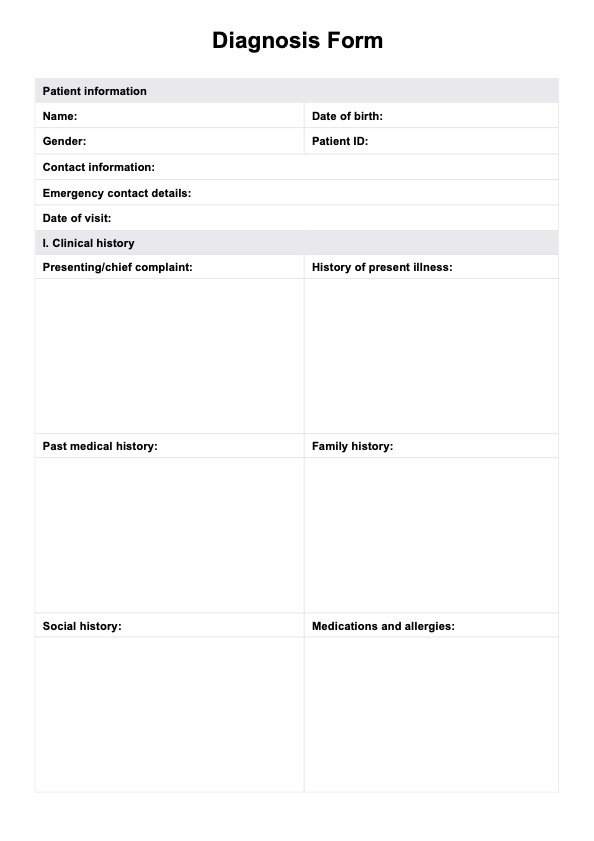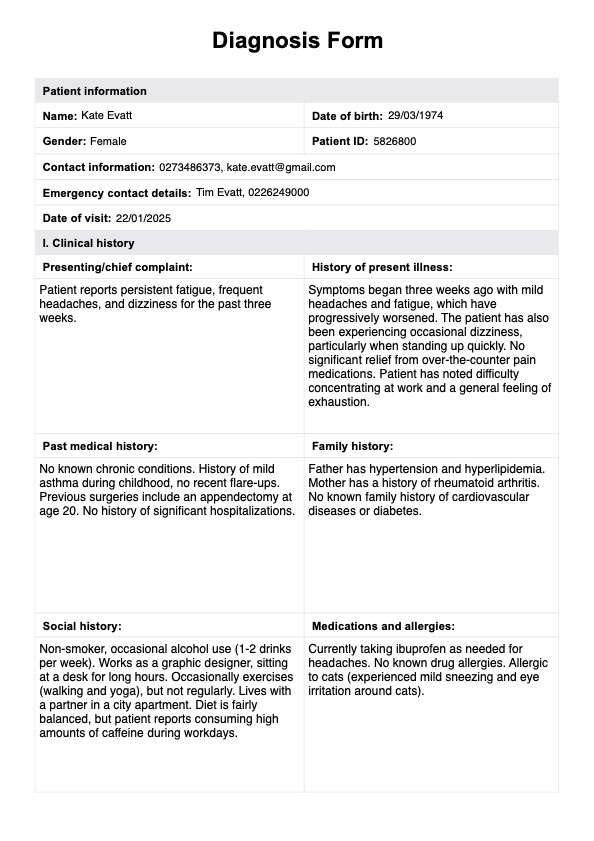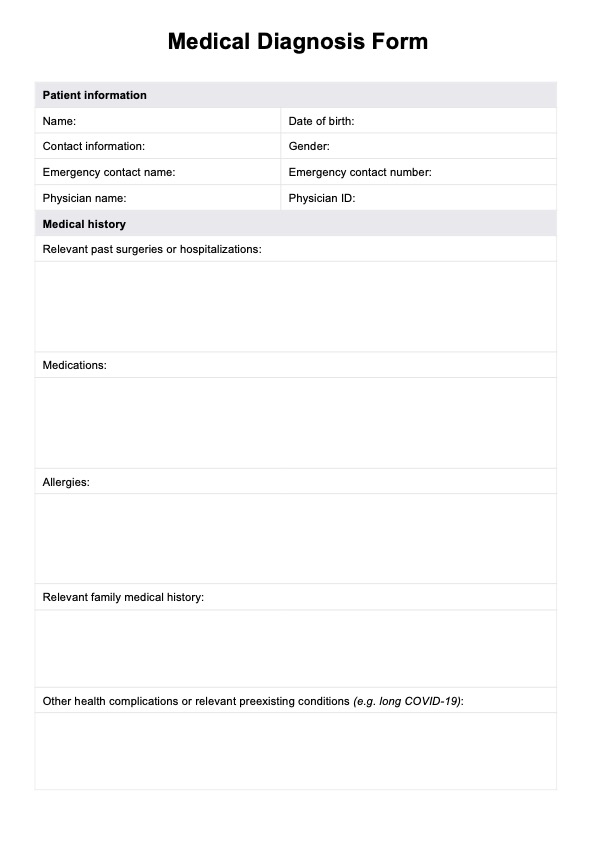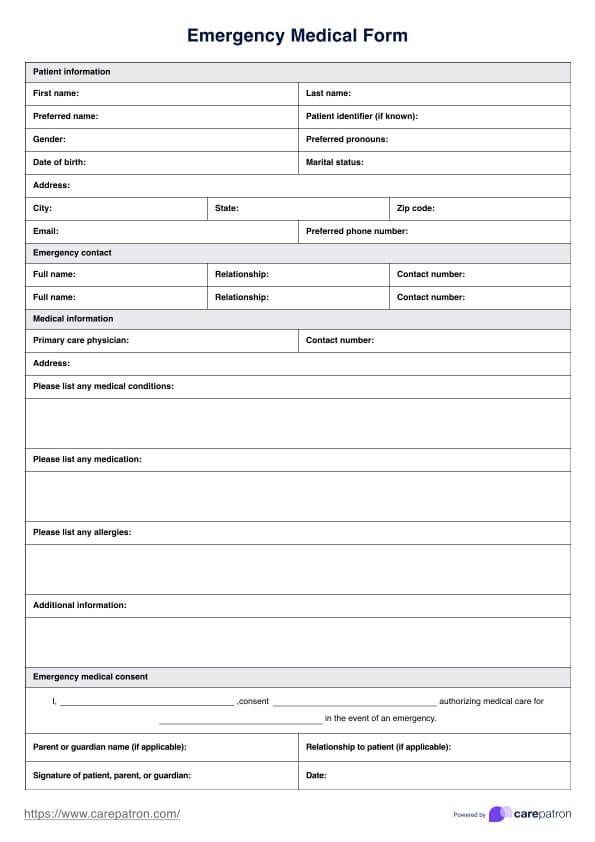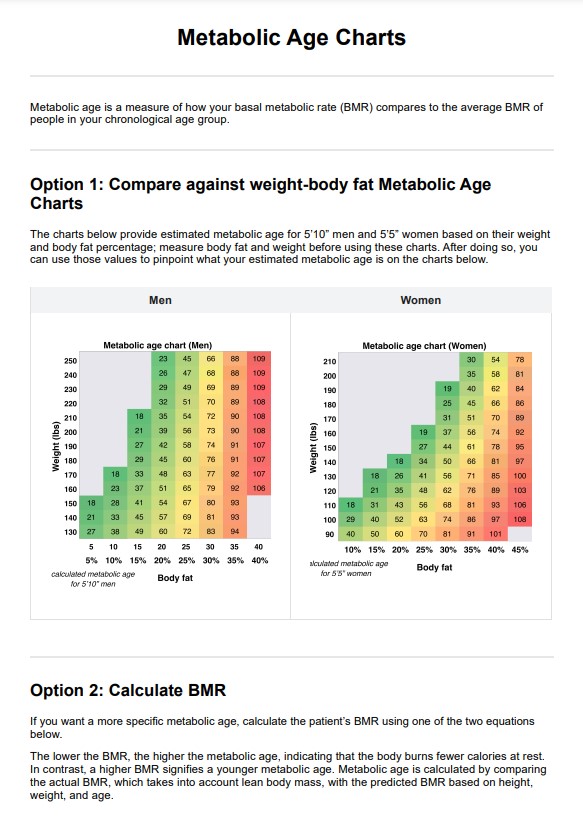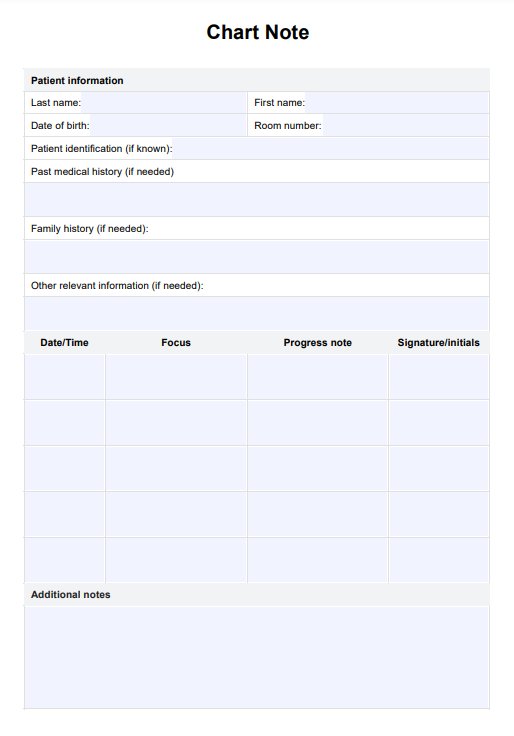Diagnosis Template
Easily document your patients' diagnoses with our Diagnosis Template. Improve your workflow and ensure accurate, organized medical records today!


What is a Diagnosis Template?
A Diagnosis Template helps clinicians document and organize key information during the diagnostic process. It allows you to record essential patient details in a structured format, ensuring nothing is missed during your assessment. With a clear, consistent layout, it saves time and improves the accuracy of your records. The template covers all essential aspects of diagnosis, from patient history to physical findings, and makes it easier to follow up on treatments and referrals.
Our Diagnosis Template is created following the information-gathering methods during the diagnostic process (Balogh et al., 2015):
- Documenting clinical history: This helps you capture the patient’s symptoms, medical background, family history, and lifestyle, which are crucial for forming an accurate diagnosis. Before this section, you can note down patient information details and emergency contact details.
- Physical examination: Here, you can document the patient’s appearance, vital signs, and any physical findings observed during the exam.
- Diagnostic testing: This section is where you record any tests ordered, such as blood work or imaging, and their preliminary results, helping guide your diagnosis.
- Referrals and consultations: If needed, you can note any specialist referrals or follow-up recommendations, ensuring comprehensive patient care.
With this template, you can ensure thorough documentation and streamline your diagnostic process.
Diagnosis Template
Diagnosis Template Example
What is in a Diagnosis Template?
Diagnosis templates function as the blueprints for healthcare professionals, guiding them to gather and organize crucial patient information. These standardized forms typically include dedicated sections for:
- Medical history: Past illnesses, medications, allergies, and family health background provide vital context for understanding the current health issue.
- Physical examination findings: Observations, palpation, percussion, and auscultation during a physical exam reveal potential physical signs of underlying problems.
- Symptoms: A detailed account of the patient's symptoms is essential for piecing together the diagnostic puzzle.
- Diagnostic tests performed: Blood work, imaging studies, or other specialized tests can confirm or rule out potential diagnoses.
- Healthcare provider's conclusions: By synthesizing all this information, healthcare professionals arrive at a well-informed diagnosis.
These pre-formatted sections ensure a consistent and comprehensive approach to data collection, paving the way for accurate diagnoses and effective patient care.
How to use this doctor diagnosis form template?
Our printable Diagnosis Template provides medical organizations and professionals with an easy form for accurate diagnoses. It ensures accurate medical documentation that includes up-to-date information.
Step 1: Download the template
You can access the diagnosis form template from this guide. Click "Use template" to open it within the Carepatron platform, where you can customize this tool according to your needs. You can also click "Download" to get a free fillable PDF copy of this form.
Step 2: Complete the patient information and clinical history section
Begin by filling out the patient data as well as their clinical history. Document the patient’s presenting complaints, medical history, family history, and lifestyle factors.
Step 3: Fill out the physical examination section
Next, complete the physical examination section. Record vital signs, such as temperature, blood pressure, heart rate, and any physical findings observed during the exam. These details provide essential clues to the diagnosis.
Step 4: Document the test results and formulate a diagnosis
Note any diagnostic tests you've ordered and their preliminary results. Enter the primary diagnosis. You may also indicate provisional and differential diagnoses, depending on the certainty of your findings. If necessary, include any referrals to specialists or follow-up recommendations to ensure continued patient care.
Benefits of using a Diagnosis Template
Utilizing our free Diagnosis Template in medical practice offers numerous advantages to medical doctors and clinicians. Below are some key benefits:
Standardized data collection
A Diagnosis Template provides a structured format for collecting and organizing patient information, ensuring you systematically gather all necessary data. This standardization is crucial for maintaining consistency across patient records, healthcare professionals, and organizations.
Enhanced patient safety
Accurate and thorough documentation facilitated by a Diagnosis Template helps identify potential risks and contraindications, enhancing patient safety and the quality of care.
Efficient communication
Diagnosis Templates enable clear and concise documentation of a patient's condition, making communicating findings with other healthcare providers easier. This improves collaboration and ensures continuity of care, especially in multidisciplinary teams.
Legal and regulatory compliance
Proper documentation of the diagnostic process ensures that all steps, decisions, and findings are clearly recorded. This is crucial for legal protection in case of disputes or audits. It also helps you comply with regulations, as accurate records are required to meet standards set by governing bodies and demonstrate that appropriate care was provided.
Educational tool
For less experienced medical practitioners, Diagnosis Templates serve as an educational tool, guiding them through the essential steps of the diagnostic process and helping them learn to identify key clinical features and patterns.
Reference
Balogh, E. P., Miller, B. T., & Ball, J. R. (2015). The diagnostic process. National Academies Press (US). https://www.ncbi.nlm.nih.gov/books/NBK338593/
Commonly asked questions
To write a diagnosis, start by getting a clear picture of the patient's medical history, including past conditions and medications. Then, do a physical exam to check for any signs or symptoms pointing to a specific condition and order any necessary tests to dig deeper. Once you have all the information, compare the findings with possible conditions and choose the most likely diagnosis based on what you've learned.
Some common medical diagnoses include asthma, diabetes, pneumonia, and hypertension. These conditions are identified by examining the patient's symptoms, medical history, and test results, such as blood work or X-rays. Each diagnosis helps the doctor understand what's going on and guides the treatment plan.
A medical diagnosis form is a tool healthcare providers use to keep track of all the essential information about a patient, from their symptoms to their test results. It's a helpful way to stay organized and ensure nothing gets missed in the diagnostic process.

.jpg)
